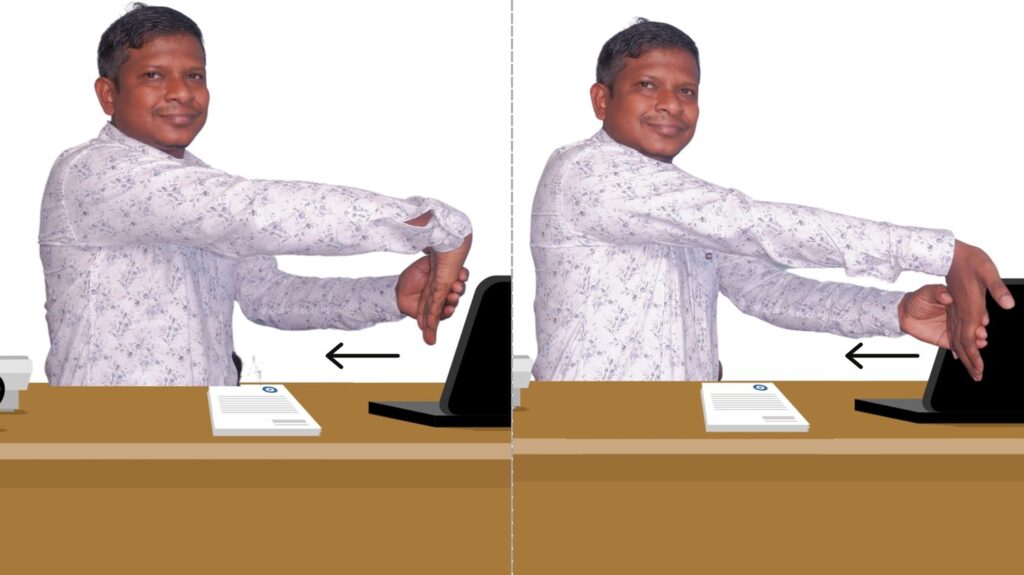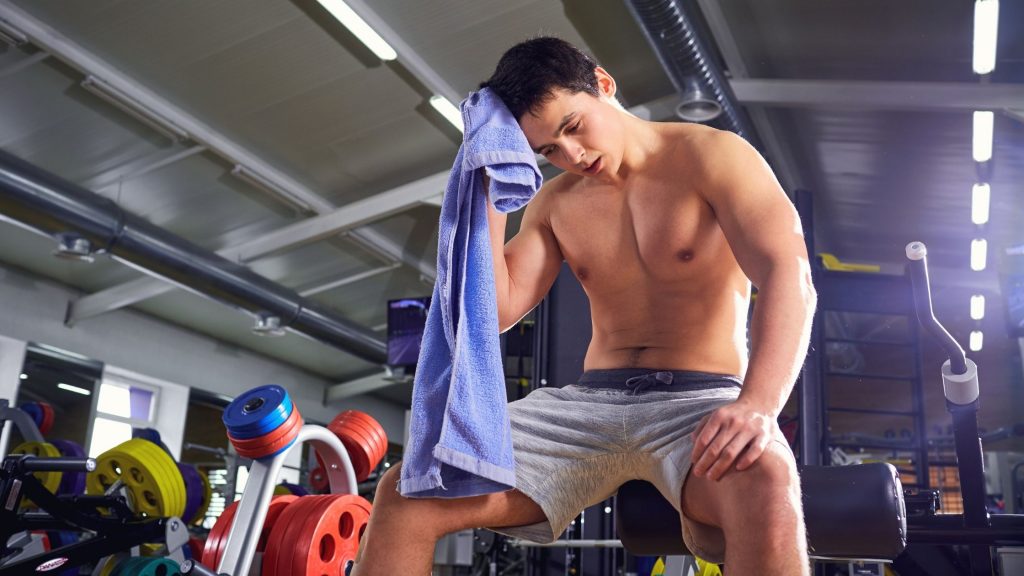Last updated on May 18th, 2024 at 07:49 pm

Yes, vestibular rehabilitation exercises can help treat vertigo.
In a study conducted by Shiozaki et al., a group of participants with vertigo underwent vestibular rehabilitation therapy for 6 months under the supervision of a physiotherapist. The participants were found to have increased physical activity in their daily lives and subsequently reported an improvement in subjective dizziness.
Vestibular therapy focuses on exercises that improve postural stability and gaze functions associated with head movements. Some common exercises include gaze stabilization, balance, habituation, and Gait and coordination exercises. In this article, we will learn some very simple vestibular exercises that you can learn and perform at home. So, let’s dive deeper into these exercises.
- What are the signs and symptoms of BPPV?
- How Does the Vestibular System Contribute to BPPV?
- Easy vestibular exercises for vertigo
- Vestibular rehabilitation exercises to stabilize the gaze
- Exercises to enhance eye movement
- Exercises to improve postural stability in vertigo
- 6) Exercise to improve dizziness & vertigo
- Exercises for neck stiffness in BPPV vertigo
- Final word
What are the signs and symptoms of BPPV?
- Symptoms of BPPV include disorientation, lightheadedness, disequilibrium, and visual blurring.
- The most common cause of dizziness is BPPV.
- BPPV is characterized by short episodes of vertigo triggered by a change in head position.
- The short duration of dizziness and provocation of dizziness by rolling over in bed are reliable predictors of BPPV2.
- Frequent short-spell dizziness provoked by changes in head position may indicate BPPV.
How Does the Vestibular System Contribute to BPPV?
Vertigo is a condition in which the vestibular system is disturbed. The vestibular system plays a crucial role in detecting the position and movement of our heads in space, maintaining posture and equilibrium and preventing falls.
The vestibular system is present inside our internal ear. It includes a fluid-filled semicircular canal that communicates with our brain through the complex nervous system.
As we move our heads, the fluid also moves inside the canal, which in turn communicates with our brain about the position of the head in space and hence maintains postural equilibrium.
So, any pathology in the internal ear causes vertigo, which could be an internal ear infection or a floating particle (calcium crystal) inside the canal.
Easy vestibular exercises for vertigo
Calcium crystals inside the semicircular canal of the internal ear cause vertigo. One effective way to dislodge this crystal into its original position is to follow a series of body positions known as semont manoeuvre thereby curing the BPPV.
Vestibular therapy is different. It is a type of rehabilitation that focuses on exercises designed to improve postural stability and gaze functions associated with head movements.
Its effectiveness can be attributed to a study in which 47 patients with vertigo underwent supervised vestibular rehabilitation exercises by physical therapists3. Encouragingly, after 6 months of intervention, all 47 patients had significantly reduced symptoms of dizziness.
The vestibular rehabilitation exercises we are going to learn here include:
- Vestibular rehabilitation therapy exercises to stabilise the gaze.
- Exercise to enhance eye movement.
- Postural stability improvement exercises.
- Exercise to improve dizziness & vertigo
- Neck stiffness exercises
It is important to note that the effectiveness of these exercises depends on the frequency and duration of treatment, as well as the patient’s adherence to the exercise program. So, let us discuss each exercise one by one.
Vestibular rehabilitation exercises to stabilize the gaze
The gaze stability is intended to stabilize the gaze. You have to keep focusing your eyes on a stationary object, and you have to move your head and/or move the object. This helps your brain learn to adjust the changes in head position and reduces the inner ear’s sensitivity to move.
These exercises can help improve the brain’s ability to process and interpret signals from the vestibular system, which helps maintain balance and prevent dizziness. The first exercise for stabilising gaze is a head turn.
1) Head turn exercise to stabilize gaze in BPPV
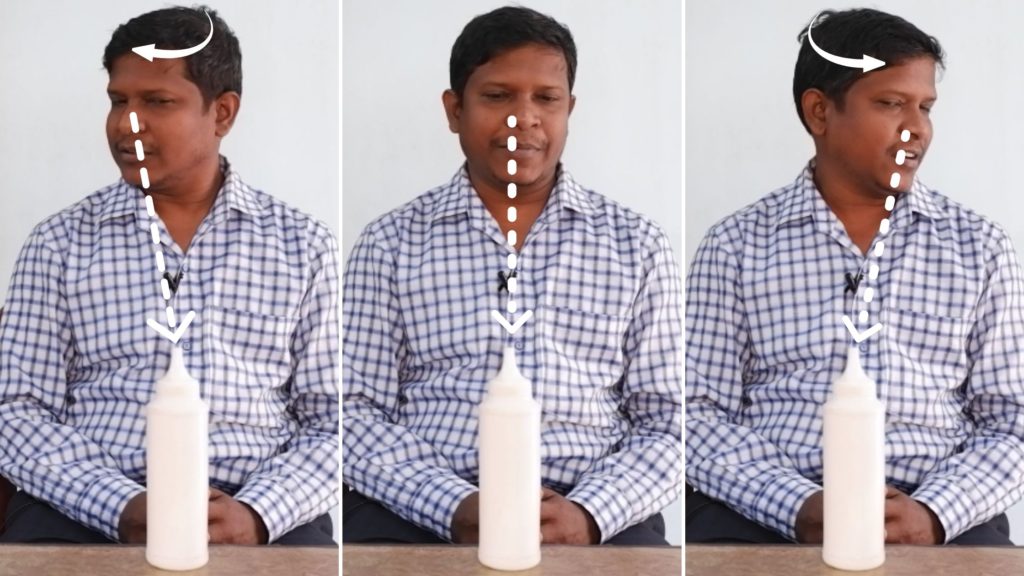
For this exercise, you will need a target to focus on. You can use a pen or anything with a pointed tip.
- First, hold the target at arm’s length and keep your focus on the tip.
- Then, slowly turn your head to one side while focusing on the target. Do not shift your focus from the target while turning your head. You can blink in between, but ensure your focus remains on the target.
- Then slowly turn to the opposite without losing the focus from the target.
- Repeat this movement for 15 to 20 reps while maintaining your focus on the target. This exercise helps improve eye coordination and strengthen neck muscles.
2) Turning head and trunk to stabilize gaze in vertigo
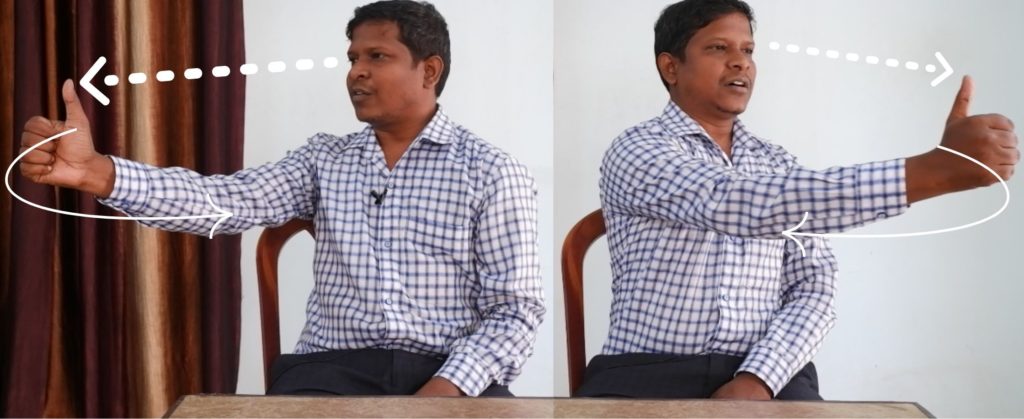
The Gaze Exercise involves a series of movements designed to improve your eye coordination and strengthen your eye muscles. The second exercise in this series is called Head and Trunk Rotation, an excellent way to enhance your ability to focus and track moving objects. To perform this exercise, start by making your thumb the target.
- Hold your thumb out in front of your eyes and keep your focus locked on the tip of your thumb.
- Next, rotate your trunk to one side so that your head and arm also move in that direction. As you do so, ensure that your focus remains on the tip of your thumb, even as it moves out of your direct line of sight.
- After briefly holding this position, rotate your trunk to the other side while focusing on the tip of your thumb.
- As you do this, you will feel your head and trunk both rotating together in a smooth motion.
- Repeat this movement for 15-20 reps in one session.
By practising this exercise regularly, you can improve your eye coordination and strengthen your eye muscles. This can help you better track moving objects and maintain your focus for longer periods.
Exercises to enhance eye movement
The next group of exercises is aimed at enhancing eye movement. Because of the dizziness, normal eye movement is disrupted. Improving eye movement also improves the function of the vestibular system. We have two exercises to enhance eye movement: saccade exercises and exercises for imagery pursuit. A few other eye exercises are equally important for the eyes, but let us focus on these two eye exercises here.
3) Saccade exercises
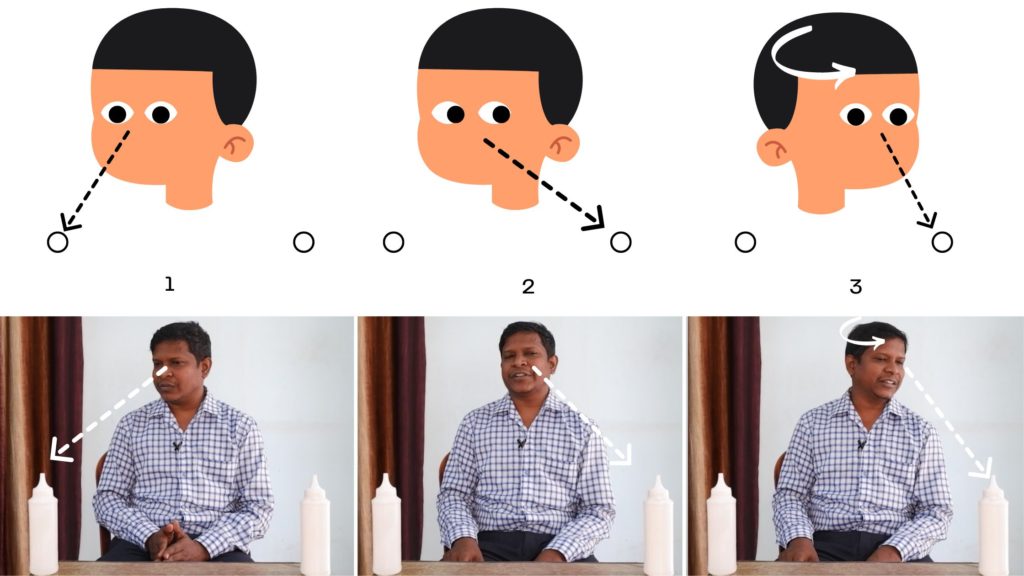
To perform this exercise, you will need two targets placed at a distance of one arm’s length between them, one on your right side and the other on your left side. Once the targets are set up, sit comfortably with your back straight and your feet firmly on the ground.
- To begin the exercise, turn your head to the right side and focus your eyes on the right-side target. This is your starting position. Hold this position for a few seconds.
- Then, shift your focus to the left-side target without turning your head. Hold this position again for a few seconds.
- In the final step, slowly turn your head to the left side target while keeping your eyes focused on it. Hold this position for a few seconds, then return your head to the starting position.
- Repeat the same process, but this time, start by turning your head to the left side and focusing on the left-side target.
- Then, shift your focus to the right-side target without turning your head, and finally, turn your head to the right-side target while keeping your eyes focused on it.
- Hold this position for a few seconds, and then bring your head back to the starting position.
- Repeat this exercise smoothly from right to left and then left to right for 10-15 times.
4) Vertigo exercise for imagery pursuit
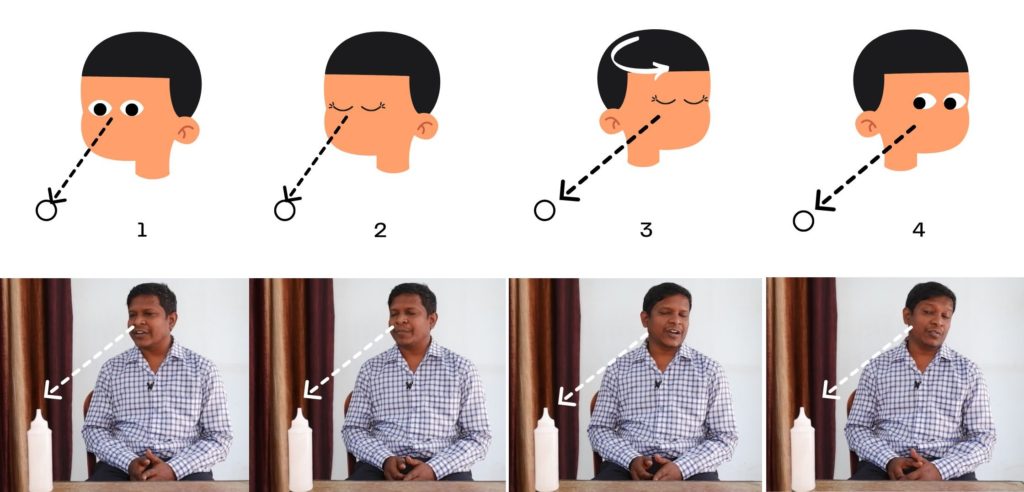
In the next BPPV exercises, you will have to remove one target; let’s say I remove the left target. This exercise requires you to turn your head towards the remaining target and focus on it.
- Once you have focused on the target, close both your eyes while still focusing on the target in your imagination.
- With your eyes closed, turn your head in the opposite direction while focusing on the target in your imagination.
- Finally, open your eyes while still maintaining focus on the target.
Let’s say you turn your head towards the right side and focus on the target. Close your eyes and imagine you are looking towards the left side while focusing on the target. Then, turn your head to the left side while still focusing on the target. Imagine that you are looking towards the target with your eyes closed. Finally, open your eyes while still maintaining your focus on the target.
It is essential to practice this exercise regularly to get a good grip on it. With consistent practice, you will find that this exercise becomes easier and easier to perform.
Exercises to improve postural stability in vertigo
Now, let us discuss some exercises that improve postural stability; they can help you feel more stable and confident when standing or moving. These exercises reduce the frequency and severity of vertigo episodes, which in turn will improve the overall quality of life.
So, let us start with the swinging back and forth exercise.
5) Swinging back and forth balance exercise for vertigo at home
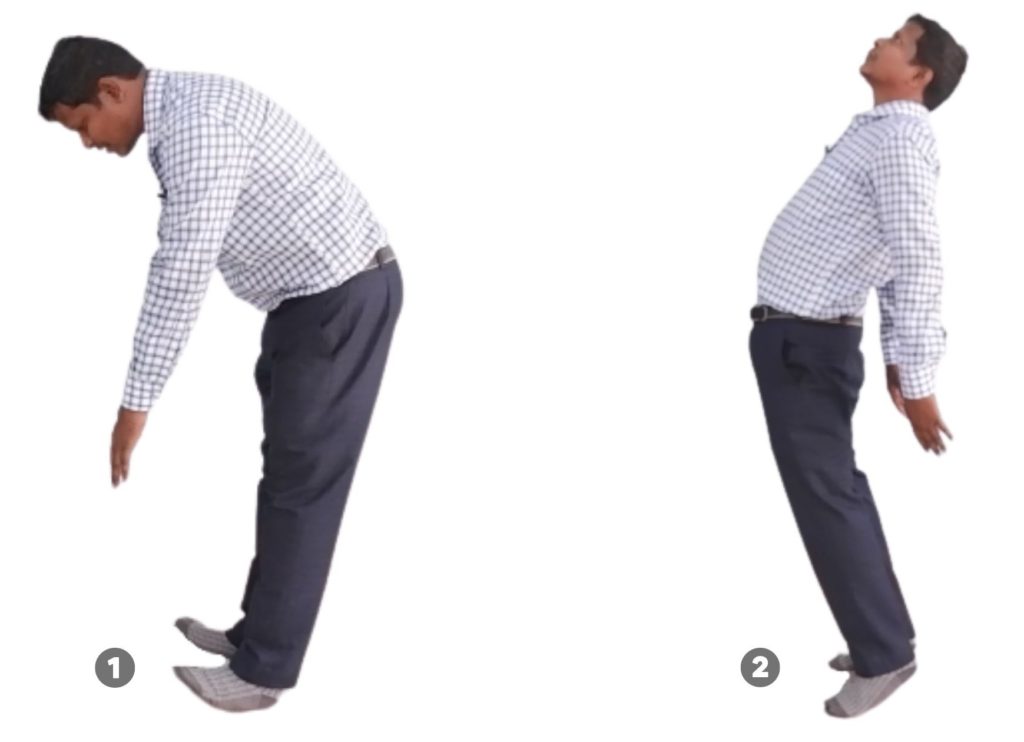
The first exercise is a swinging back-and-forth exercise meant to improve your balance and stability.
- To start, stand straight with your hands by your sides.
- Begin by partially bending forward and then backward, allowing your hands to swing back and forth as you move. Do this slowly and smoothly, as if swinging back and forth like a pendulum.
- Add slight foot movements to the exercise once you have mastered the basic swinging motion.
- When you swing forward, grab your heels, and when you swing backwards, grab your toes. It’s essential to do this smoothly and fluidly to maintain balance.
To enhance your balance, you can add a few more exercises to your routine. Try walking in a straight line, otherwise known as a catwalk. This exercise can help you regain balance and improve coordination. You can also try walking on a curvy line drawn on the floor to challenge your balance even more.
Another excellent exercise for improving balance is standing on one foot. Start by standing on one foot for 30 seconds to 1 minute, maintaining good posture and balance. Once you feel comfortable, switch to the other foot and repeat. This exercise can help you regain stability and improve your overall balance.
6) Exercise to improve dizziness & vertigo
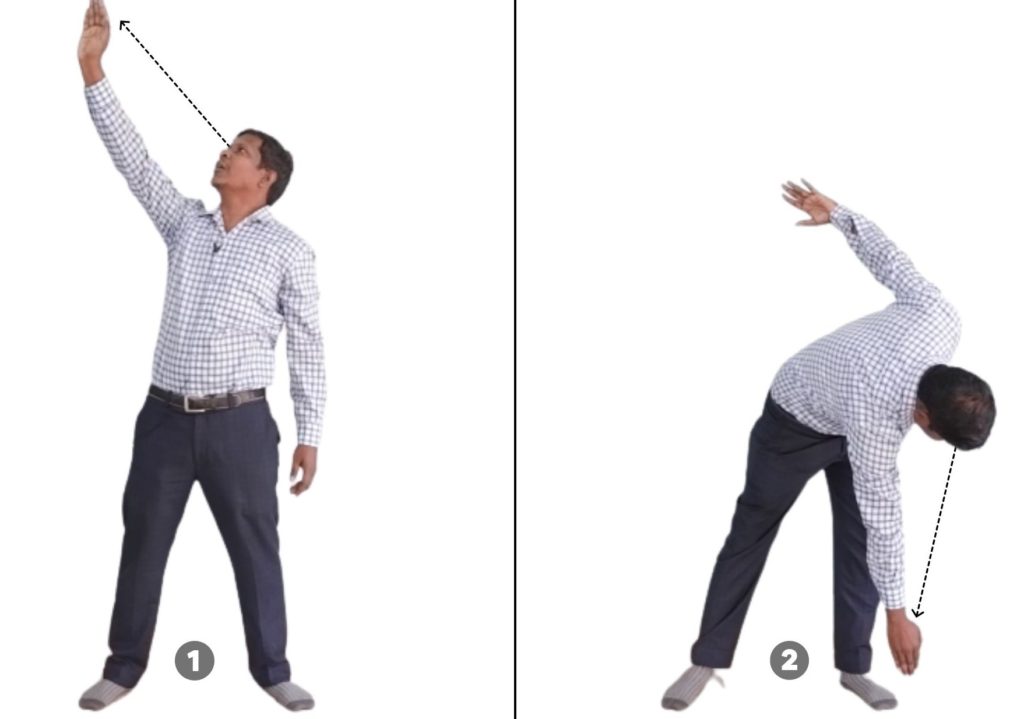
This exercise is designed to help alleviate vertigo and is relatively simple.
- Start by standing up straight and placing one of your hands between your feet.
- Next, raise one of your arms straight up into the air, with your finger pointing towards the ceiling. In this position, turn your head upwards and focus on the tip of the finger of the elevated hand.
- Now, slowly bend over and lower the arm diagonally while keeping your eyes focused on the tip of your finger. Continue to lower your arm until it arrives at the opposite foot. Make sure to move slowly and smoothly, and do not lose focus from the tip of your finger.
- Repeat this exercise with the other arm, raising it straight into the air and focusing on the tip of the finger.
- Slowly bend over and lower the arm diagonally, all while keeping your eyes fixed on the finger.
- Continue to lower the arm until it reaches the opposite foot.
Exercises for neck stiffness in BPPV vertigo
The fifth point is neck exercise. It is also necessary because, friends, when we get dizzy, we make our posture stable. In making it stable, we make the neck stiff. If this happens continuously, then stiffness develops in the muscles around the neck, which needs to be released. I’ll show you some neck exercises; if you add them to this, you will benefit greatly.
7) Neck stretching exercise for BPPV vertigo
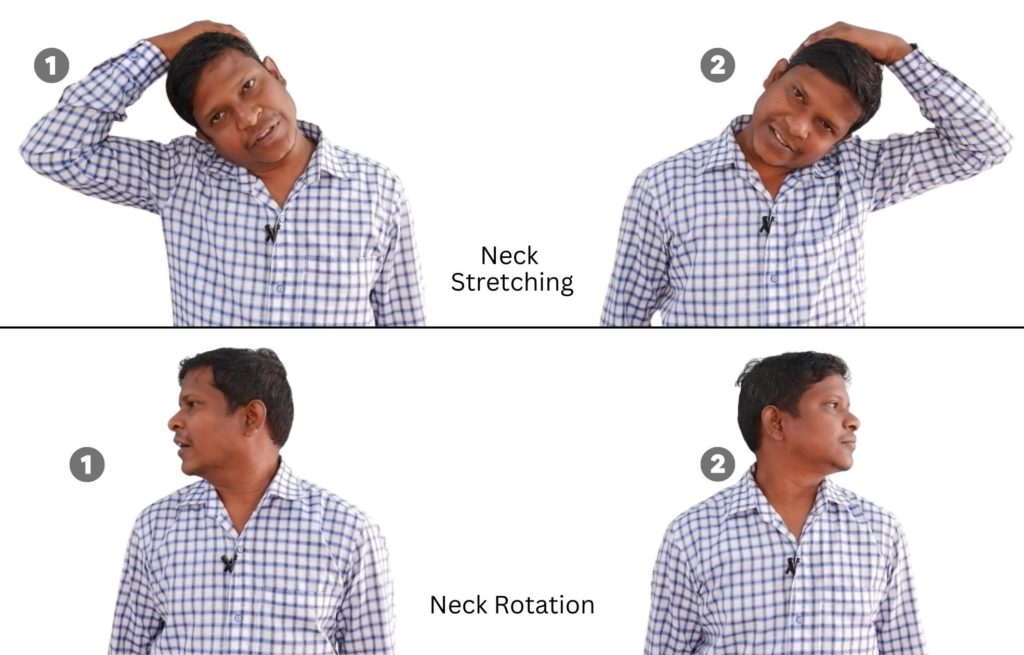
The first exercise is a stretching exercise that focuses on the muscles on the left and right side of your neck.
- To perform this exercise, start by placing your right hand on the left side of your head just above the ear.
- Then, gently pull your head towards your right shoulder until you feel a comfortable stretch in the muscles on the left side of your neck.
- Hold this position for at least 30 seconds, then release and repeat on the other side.
- Repeat this movement 4-5 times.
8) Neck rotation
The neck rotation exercise is a simple and effective way to stretch and loosen the muscles in your neck. To perform this exercise, you can sit or stand with your spine straight and your shoulders relaxed. Here are the step-by-step instructions:
- Start by looking straight ahead with your head in a neutral position.
- Slowly turn your head to the right as if looking over your right shoulder. Keep your chin parallel to the ground.
- Hold this position for a few seconds while feeling a gentle stretch in your neck.
- Slowly return your head to the centre, and pause for a moment.
- Repeat the movement to the left side, turning your head as if looking over your left shoulder. Keep your chin parallel to the ground.
- Hold this position for a few seconds, feeling a gentle stretch in your neck.
- Slowly return your head to the centre, and pause for a moment.
- Continue alternating sides for several repetitions, moving your head slowly and smoothly without jerking or forcing it.
9) Neck side bending
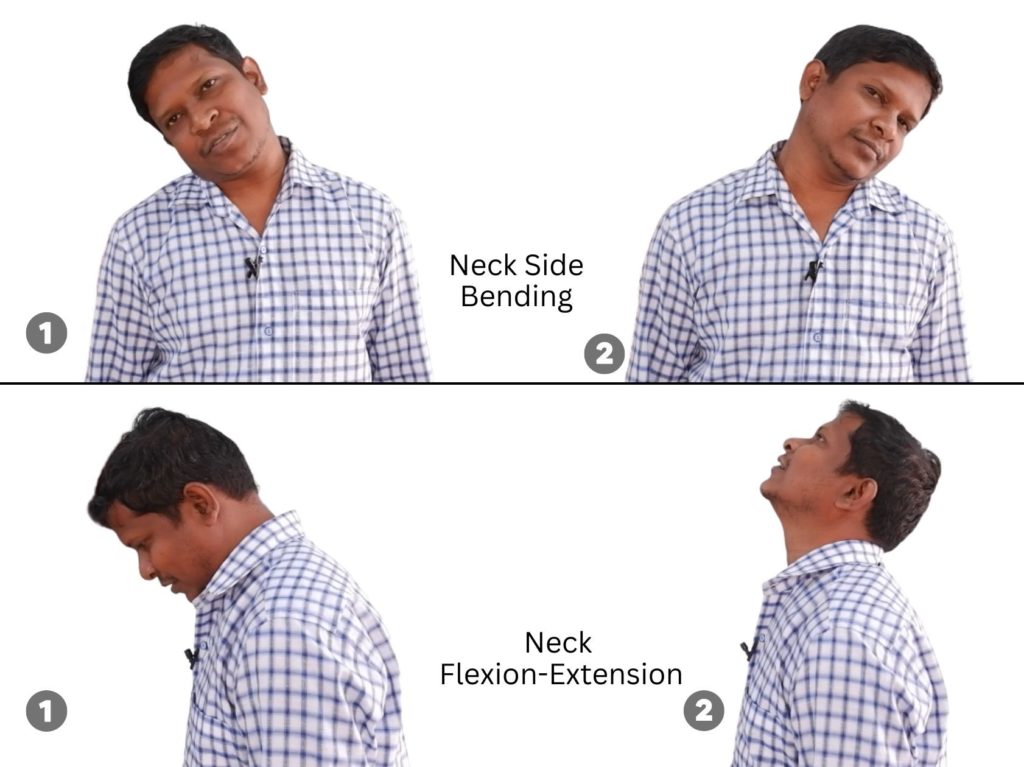
This exercise is a simple yet effective way to reduce tension and increase mobility in your neck. It involves gently tilting your head to one side and stretching the muscles on the opposite side of your neck.
- Start by standing or sitting upright with your shoulders relaxed to perform this exercise. Ensure your spine is straight, and your chin is level with the ground.
- Now, slowly tilt your head to one side; for example, let’s say we’re tilting it to the left side. Bring your left ear towards your left shoulder while keeping your right shoulder relaxed and stationary.
- As you tilt your head, you should feel a stretch in the muscles on the right side of your neck. Don’t push yourself too hard, though – stop when you feel a comfortable stretch.
- Hold this position for 5 seconds, then slowly return your head upright.
- Repeat the same procedure on the other side, tilting your head to the right and bringing your right ear towards your right shoulder. You should feel a stretch in the muscles on the left side of your neck.
- Complete 10-15 repetitions on each side, depending on your comfort level.
10) Neck flexion-extension
The third exercise is neck flexion and extension. To begin, you can sit comfortably with your spine straight and shoulders relaxed.
- To perform neck flexion, start by looking straight ahead and slowly lowering your chin towards your chest, feeling a stretch in the back of your neck.
- Hold this position for a few seconds and then return to the starting position.
- For neck extension, start by looking straight ahead and slowly tilting your head backwards, feeling a stretch in the front of your neck.
- Hold this position for a few seconds and then return to the starting position.
- You can repeat this exercise for 10 to 15 repetitions in a session and gradually increase the number of repetitions as you feel comfortable. It is important to perform this exercise slowly and gently to avoid straining or injuring your neck muscles.
Final word
Incorporating vestibular rehabilitation exercises into your daily routine can immensely benefit a person suffering from symptoms of BPPV vertigo. Though you can learn exercises by following the instructions in this article, we sincerely recommend you work with your healthcare provider or physical therapist to implement these exercises.
It is important to note that the positional manuever can give results in two to three days of exercise, but it takes time to recover from its symptoms fully.
So, have patience and be consistent with your exercise routine. With commitment and perseverance, you can take control of your BPPV symptoms and improve your quality of life and well-being.
Keep Reading: Vertigo & Migraine Has New Hope: Place This Device On Neck
The author is a physiotherapist who has been practising for the last 17 years. He holds a Bachelor's in Physiotherapy (BPT) from SVNIRTAR (Swami Vivekananda National Institute of Rehabilitation and Research), one of the prestigious physiotherapy schools in India.
Whatever he learns dealing with his patient, he shares it with the world through blogs and e-books. He also owns a YouTube channel, "Sunit Physiotherapist" with over 8 lakh active subscribers. Here, he shares everything he gets to learn serving the patient.

